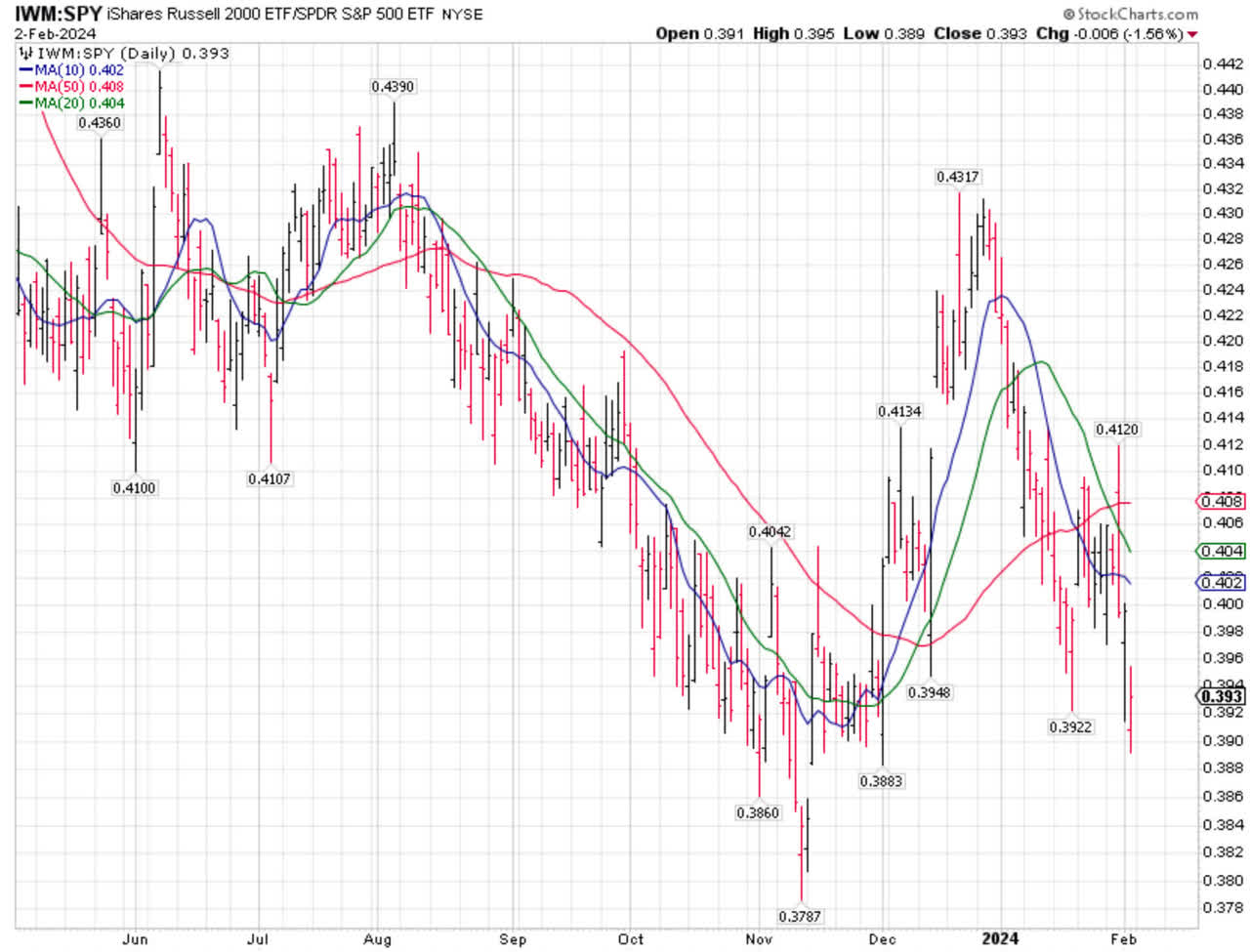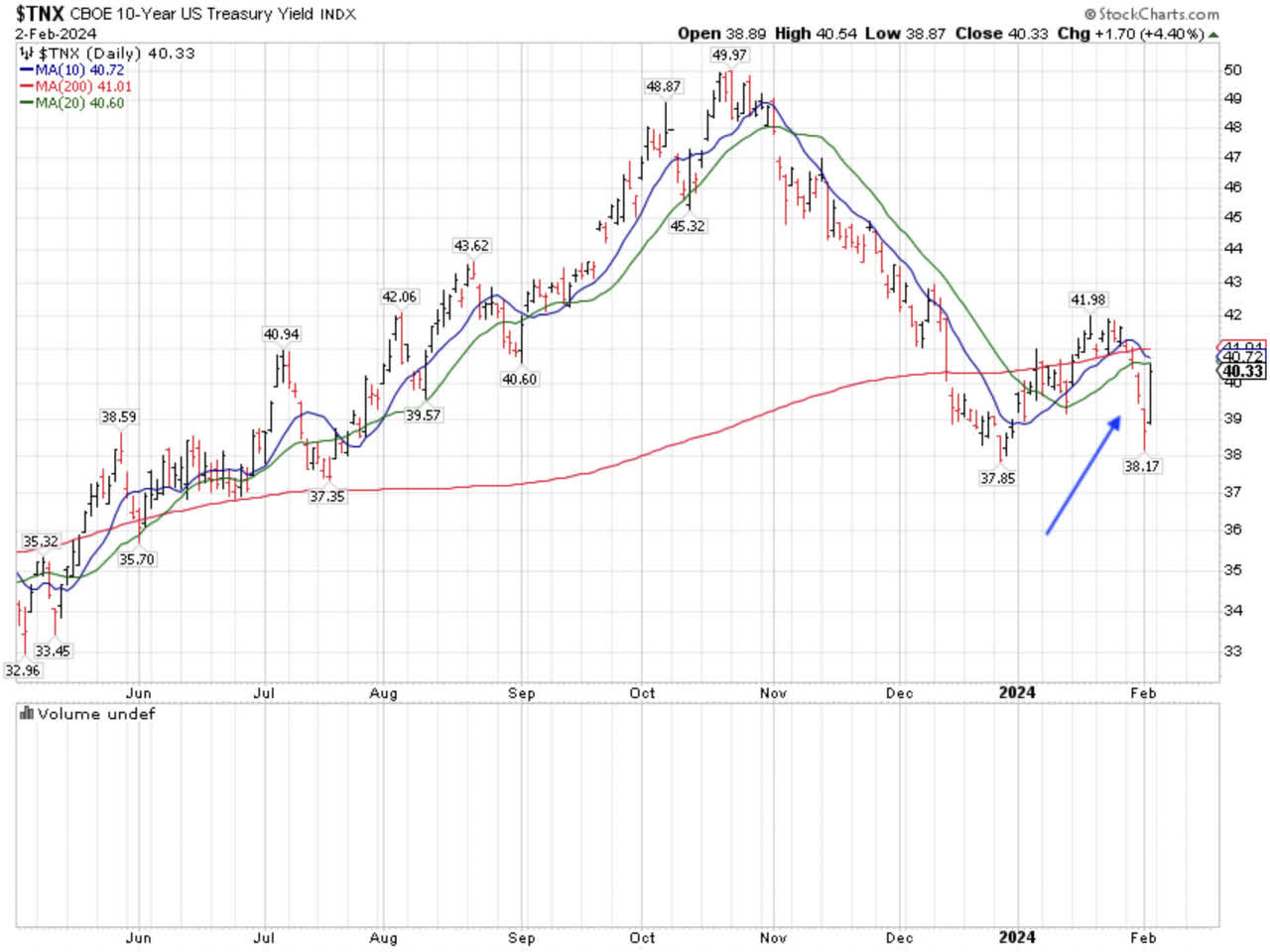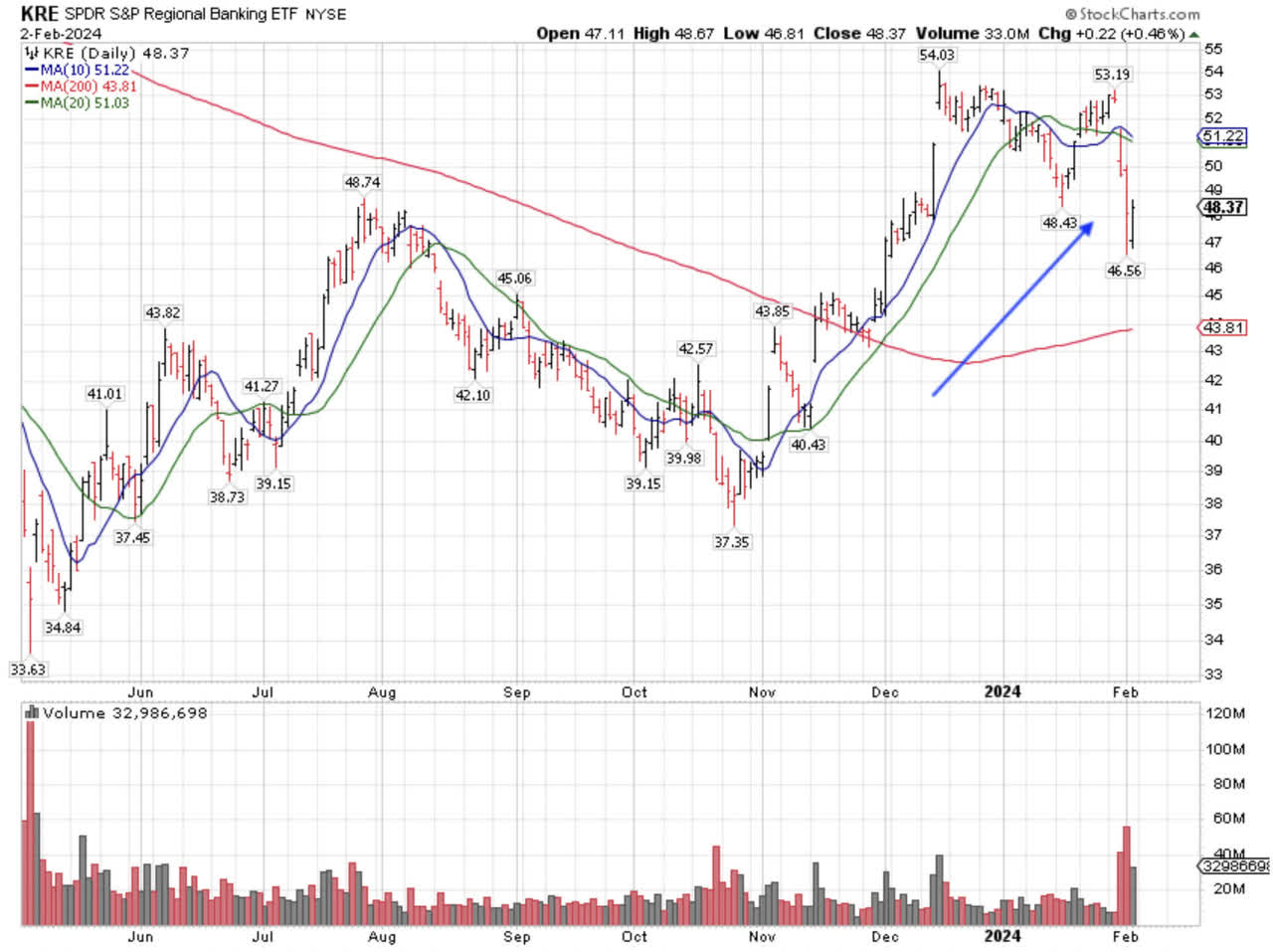Bonds Are Once Again More Volatile Than Stocks
Summary
- It is normal to see huge swings in bonds and stocks on a day when the Fed Chairman releases his FOMC statement and holds a press conference.
- What is far from normal, however – although we have seen it occasionally – is to see a sharp selloff in bond prices, pushing the 10-year yield up 17 basis points in one day, on Friday.
- Investors are selling first and asking questions later, and I believe that if more banks deliver news of rising loan loss provisions due to CRE issues, the pressure on the regional banking sector would increase.

tadamichi
It is normal to see huge swings in bonds and stocks on a day when the Fed Chairman releases his FOMC statement and holds a press conference, as he has earned a reputation for spicing things up during the presser.
He did not disappoint us last week by effectively taking a March rate cut of the Fed funds rate off the table, which pressured stocks and boosted bond prices.
But then, a solid jobs report for January, which is notoriously full of large seasonal adjustments, boosted stocks and pressured bonds, reversing declines from earlier in the week, enough to register fresh new all-time highs for the major indexes on Friday.
Graphs are for illustrative and discussion purposes only. Please read important disclosures at the end of this commentary.
What is far from normal, however – although we have seen it occasionally – is to see a sharp selloff in bond prices, pushing the 10-year yield up 17 basis points in one day, on Friday.
Most retail investors don’t pay close attention to bonds, but that’s the equivalent of the Dow Industrials declining about 1,000 points in a single day, which would certainly catch most retail investors’ attention if it were to happen.
Graphs are for illustrative and discussion purposes only. Please read important disclosures at the end of this commentary.
For the week, bonds first rallied dramatically and then declined equally dramatically on Friday, but this is not just due to Jerome Powell’s Wednesday Q&A session or the Friday jobs report.
In this case, the fly in the ointment is the regional banking sector, which was pressured by New York Community Bancorp (NYCB) sharply increasing loan loss provisions, partially due to commercial real estate loans.
It is well known that many commercial real estate (CRE) properties all over the country cannot refinance or otherwise make their tenant agreements work, therefore causing such properties to default on loans.
Investors are selling first and asking questions later, and I believe that if more banks deliver news of rising loan loss provisions due to CRE issues, the pressure on the regional banking sector would increase.
Last March, when Silicon Valley Bank failed, investors piled into the NASDAQ 100 and the overall stock market went up, but on very narrow breadth, which from a historical perspective is not healthy.
This year, after the broadening of the market in November and December 2023, they appear to be doing the same.
This decrease in market breadth can be seen in the renewed under-performance of the Russell 2000, as represented by its iShares ETF (IWM), when compared to the S&P 500 Index (in the chart below).

Basically, we lost most of the gains in relative performance that we got in November and December and, as luck would have it, many regional financials are part of the Russell 2000 Index.
It remains to be seen if we averted a real banking crisis last year, or if it will return. The rollover of debts at higher interest rates will be an ongoing problem for the U.S. economy, and that is nearly impossible to quantify.
We may yet see many of the problems that could arise from Jerome Powell’s super-fast hiking of interest rates, mainly because he was behind the curve when responding to the inflation problem.
I remain of the view that inflation became an issue not only because of the Fed, but because of record-high deficits at times of malfunctioning supply chains and an overall misfiring U.S. and global economy.
Such extreme deficit spending during World War II created a similar inflation problem in 1947, when the economy began to normalize and demand after the war for normal goods and services, not tanks and machine guns, went parabolic.
Inflation burned itself out then in a normalizing economy, and I believe it will do so now, if the multiple military conflicts we have now don’t spread further.
Navellier & Associates does not own New York Community Bancorp (NYCB) in managed accounts. Ivan Martchev does not personally own New York Community Bancorp (NYCB).
All content above represents the opinion of Ivan Martchev of Navellier & Associates, Inc.
Disclaimer: Please click here for important disclosures located in the "About" section of the Navellier & Associates profile that accompany this article.
Disclosure: *Navellier may hold securities in one or more investment strategies offered to its clients.
Editor's Note: The summary bullets for this article were chosen by Seeking Alpha editors.
Disclaimer: Investing carries risk. This is not financial advice. The above content should not be regarded as an offer, recommendation, or solicitation on acquiring or disposing of any financial products, any associated discussions, comments, or posts by author or other users should not be considered as such either. It is solely for general information purpose only, which does not consider your own investment objectives, financial situations or needs. TTM assumes no responsibility or warranty for the accuracy and completeness of the information, investors should do their own research and may seek professional advice before investing.



